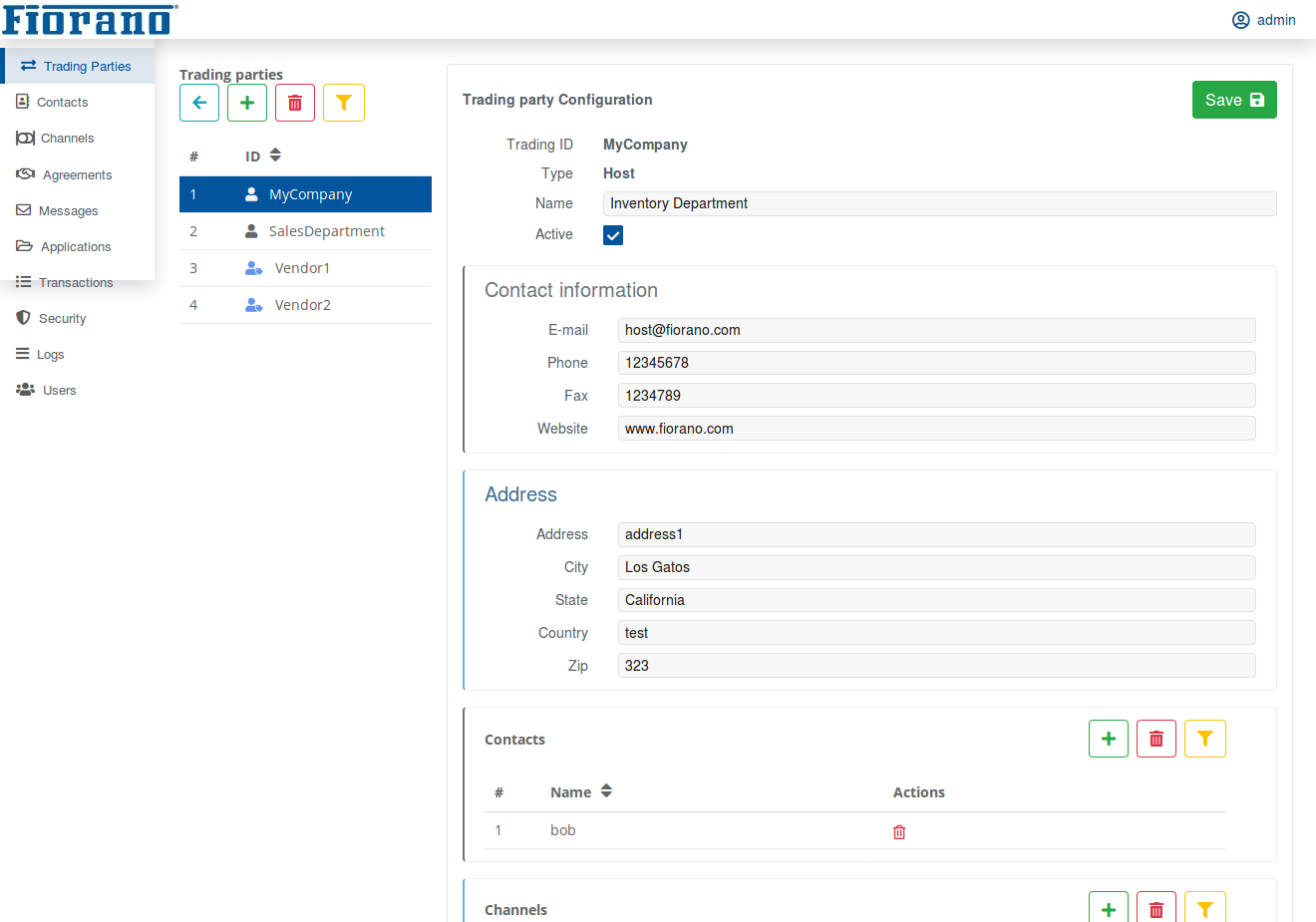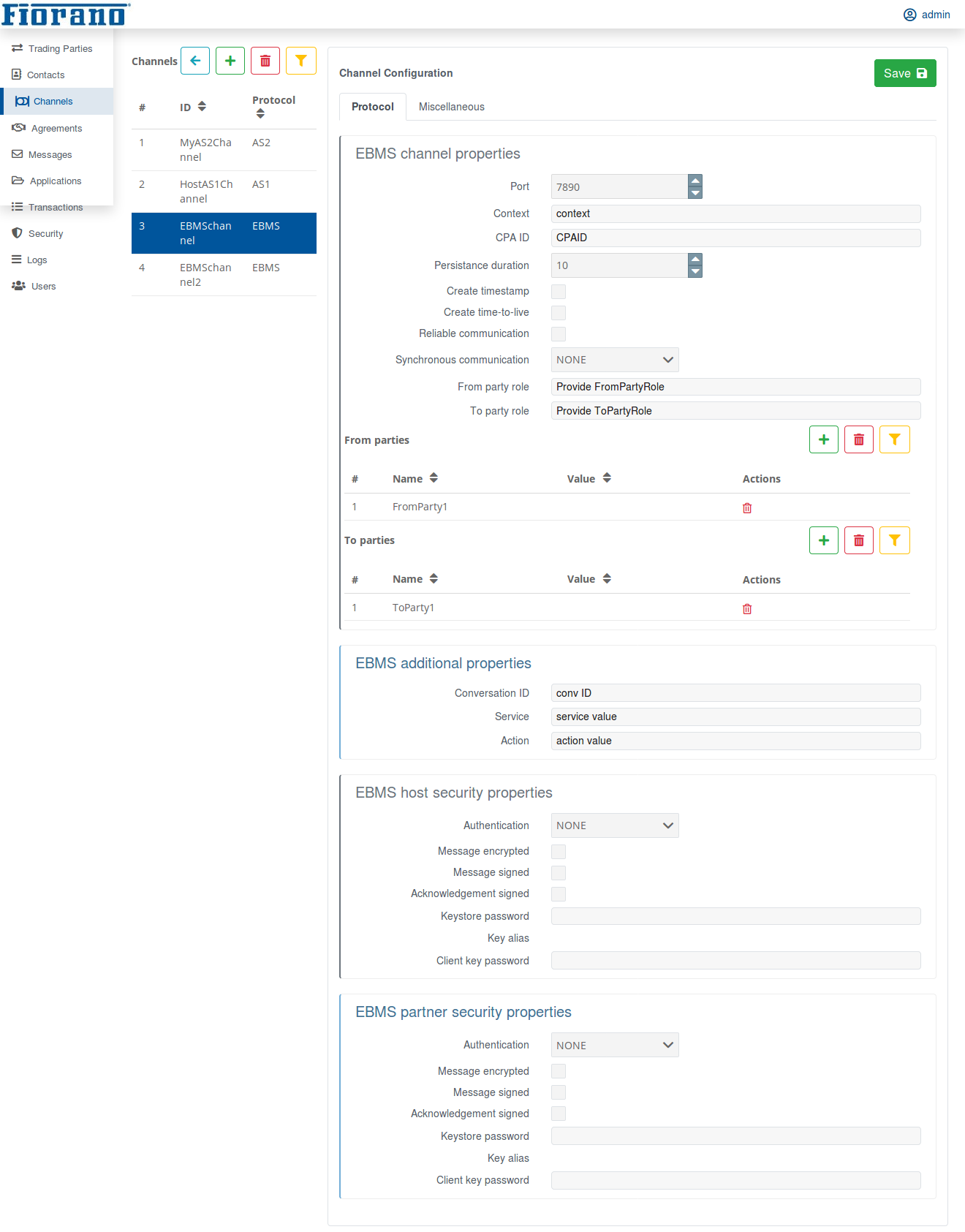Trading parties are the entities which are participating in business-to-business communications. The parties can be either on the host side, for example, an internal department, or a remote trading party, for example, a Vendor. These parties can communicate using channels with the support of standard B2B protocols such as AS1, AS2, EBMS and Plain SOAP. This section captures the information about the entities within the organization as well as the partners.
The two groups that come under Trading Parties are:
- Host Trading Party: An entity within the organization, which needs to communicate with external entities, using their own set of communication channels has to be added as 'Host Trading Party'.
- Remote Trading Party: Any entity outside the organization with which the Host Trading Parties do B2B transactions has to be added as 'Remote Trading Party' or 'Remote Partner'. The Host Trading Parties communicate with Remote Partners using the standard B2B protocols. This information is stored as 'Channel Configuration' which forms part of a trading party configuration.
Configuration
Trading Party Configuration
In the dashboard, the Trading Parties tab in the left navigation panel provides the option to add Trading Parties. Click the Add button to add a trading party.
Provide details on the Trading party Configuration page.
Unchecking the Active option allows deactivating an already added trading party and all their endpoints. This helps to suspend a remote partner's contract that is awaiting renewal, in such a case.
In the figure below, the trading parties: MyCompany and SalesDepartment that are created are host trading parties, and Vendor1 and Vendor2 are remote trading parties/partners.

Figure 1: Basic Configuration
Channel Configuration
Channels define the protocols with which the entities communicate with each other. They capture the information that is specific to a protocol, for example, the email addresses (AS1), URLs (AS2) and endpoint addresses. Each trading party can be associated with multiple channels.
Example1:
If SalesDepartment needs to receive documents from Vendor1 which sends business documents using the AS2 protocol, an AS2 channel needs to be added in Sales Department's channels.
Example2:
If Vendor1 receives documents from its partners using AS1 protocol to a particular mail ID, an AS1 channel needs to be added to Vendor1 channels and the mail ID should be specified in the channel's configuration.
Protocol Parameters
Click the Channels tab to see the various channels configured for a Host Trading Party. Click a channel name to provide EBMS channel properties under the Protocol tab.

Figure 2: Channels Configuration
The details specific to a protocol like encryption/signing configuration that is required by a channel can be configured in this tab.
In the figure, since the channels correspond to Host Trading Party, the configuration is for receiving messages. Details such as the port on which the EBMS requests will be received can be configured as part of channel properties. For a Remote Trading Party, information about the endpoint URL can be configured instead.
Miscellaneous
Actions that need to be performed in case of failure can be set under the Retry configuration section in the Miscellaneous tab.

Figure 3: Miscellaneous Configuration